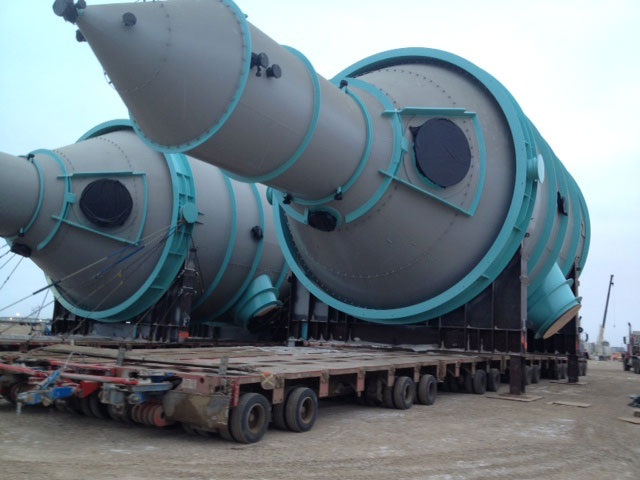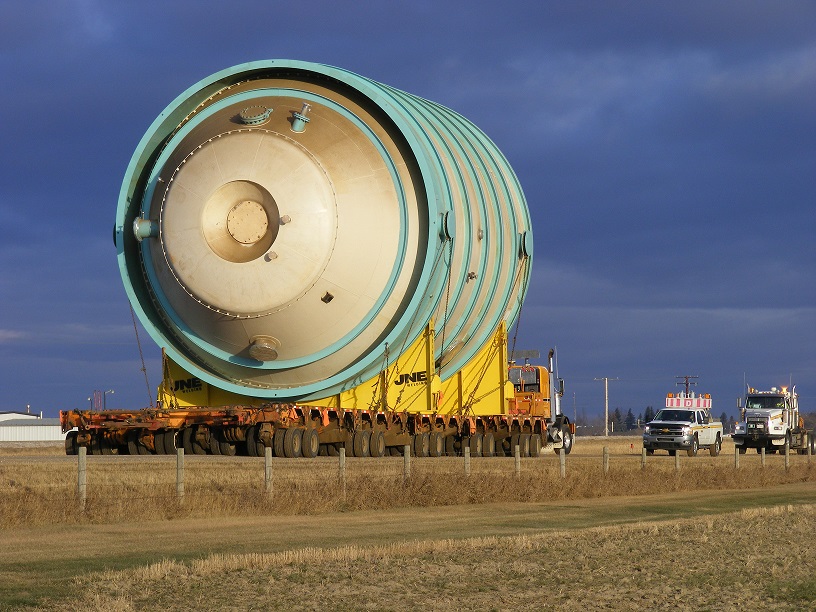Legacy: Thinking in Bigger Dimensions


The roads of Saskatchewan have likely never borne such heavy loads before. The monstrous cargo carried on a 12-axle trailer is 30 meters long, 10.5 meters wide, and weighs an impressive 209 metric tons. It takes painstaking planning to transport the crystallizer unit manufactured by JNE Welding in Saskatoon to the Legacy site. There, it will form the centerpiece of the new potash plant, together with four additional crystallization units and a whole battery of vast drying equipment and evaporators. Legacy means thinking in bigger dimensions. The size of the premises alone, which are located near the village of Bethune inhabited by 500 people, is hard to grasp for many Europeans.
Construction on the Canadian prairie has been progressing at a stiff pace in recent months. “We are 100 percent on time and on budget,” says a highly satisfied Dr. Ulrich Lamp, CEO of K+S Potash Canada. “In the peak season this summer, there will be more than 2,000 people working on the construction site!” Currently, the focus rests on steel construction work and completing the central evaporation, purification, and crystallization components, as well as the transition to the stable operation of all machines for cavern development. More than 30 cranes rise into the mostly blue sky over Saskatchewan. Legacy has a vast appetite for steel – 35,000 metric tons to be exact – which is approximately five times the amount used 125 years ago to erect the Eiffel Tower in Paris. The total volume of concrete required exceeds 65,000 m3, which is why it is mixed in a dedicated factory on site.

At present, six drilling fields are being constructed above the vast potash seam 1500 metres below the ground. Every single one of these fields comprises nine caverns– each of which is the size of the Munich Allianz Arena. Two fields are already in operation; the caverns below them will be brought to production size in the next few months. Says Sam Farris, Vice President and General Manager of Operations at KSPC: “We will extract the potash deposits using the solution mining method. This involves deep drilling and then washing out the caverns with water, which is actually closer to heavy oil production than standard potash mining.” As soon as the tank farm is completed, the brine solution pumped up from a depth of 1,500 metres will undergo an evaporation and crystallization process before the crystallized product is dried, compacted, and shipped off to customers.
Transporting the final product represents another technological challenge: Construction of the new 30-kilometre train track connecting the Legacy plant with the existing Canadian Pacific line at Belle Plaine to the south will commence in the late spring of 2015. On-site, too, a railway network comprising approximately 20 kilometres of tracks will be laid. From Belle Plaine, the potash products will travel across 1,800 kilometres and over the Rocky Mountains on their westward journey. The 177 rail cars pulled by five locomotives will measure a staggering 3000 metres. This behemoth will pass through the 14.7-kilometre MacDonald tunnel and climb over the Kicking Horse Pass, which marks the trek’s highest elevation. “There will be two trains per week, and each trip will take between three and four days,” says Steffen Brill, Senior Manager, Logistics and Transportation at KSPC.
A new train unloading station and a warehouse with a capacity of 160,000 metric tons – enough to store the load of nine freight trains – are being built in Port Moody, British Columbia, and the construction is due for completion in the fall of 2016.
